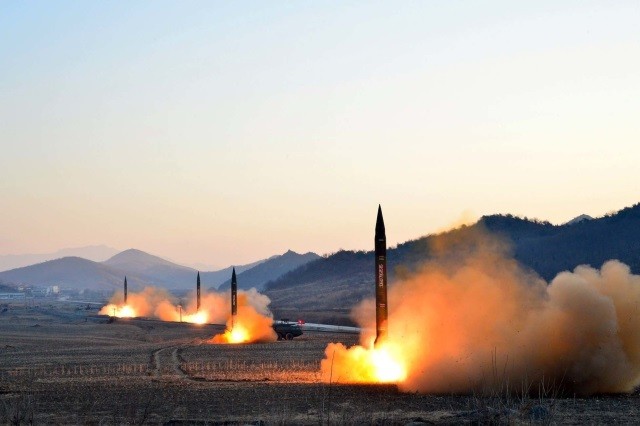Hawaii panicked for some 40 minutes on Saturday after a false alarm on a missile attack was mistakenly sent out to all residents.
By: AP
A false alarm that warned of a ballistic missile headed for Hawaii sent the islands into a panic Saturday, with people abandoning cars in a highway and preparing to flee their homes until officials said the cellphone alert was a mistake.
Hawaii officials apologized repeatedly and said the alert was sent when someone hit the wrong button during a shift change. They vowed to ensure it would never happen again.
“We made a mistake,” said Hawaii Emergency Management Agency Administrator Vern Miyagi.
For nearly 40 minutes, it seemed like the world was about to end in Hawaii, an island paradise already jittery over the threat of nuclear-tipped missiles from North Korea.
The emergency alert, which was sent to cellphones statewide just before 8:10 a.m., said: “BALLISTIC MISSILE THREAT INBOUND TO HAWAII. SEEK IMMEDIATE SHELTER. THIS IS NOT A DRILL.”
‘Everyone was panicking’
On the H-3, a major highway north of Honolulu, vehicles sat empty after drivers left them to run to a nearby tunnel after the alert showed up, the Honolulu Star-Advertiser reported. Workers at a golf club huddled in a kitchen fearing the worst.
Professional golfer Colt Knost, staying at Waikiki Beach during a PGA Tour event, said “everyone was panicking” in the lobby of his hotel.
“Everyone was running around like, ‘What do we do?'” he said.
Cherese Carlson, in Honolulu for a class and away from her children, said she called to make sure they were inside after getting the alert.
“I thought, ‘Oh my god, this is it. Something bad’s about to happen and I could die,'” she said.
The Hawaii Emergency Management Agency tweeted there was no threat about 10 minutes after the initial alert, but that didn’t reach people who aren’t on the social media platform. A revised alert informing of the “false alarm” didn’t reach cellphones until about 40 minutes later.
The incident prompted defense agencies including the Pentagon and the US Pacific Command to issue the same statement, that they had “detected no ballistic missile threat to Hawaii.”
Government agencies are not prepared
The White House said President Donald Trump, at his private club in Florida, was briefed on the false alert. White House spokeswoman Lindsay Walters said it “was purely a state exercise.”
Hawaii House Speaker Scott Saiki said the system Hawaii residents have been told to rely on failed miserably. He also took emergency management officials to task for taking 30 minutes to issue a correction, prolonging panic.
“Clearly, government agencies are not prepared and lack the capacity to deal with emergency situations,” he said in a statement.
For their part, Hawaii Gov. David Ige and Miyagi, the emergency management administrator, apologized and vowed changes.
“I am sorry for the pain and confusion it caused. I, too, am extremely upset about this and am doing everything I can do to immediately improve our emergency management systems, procedures and staffing,” Ige said.
Hawaii US Sen. Brian Schatz tweeted the false alarm was “totally inexcusable” and was caused by human error.
“There needs to be tough and quick accountability and a fixed process,” he wrote.
Federal Communications Commission Chairman Ajit Pai said on social media the panel would launch an investigation.
With the threat of missiles from North Korea in people’s minds, the state reintroduced the Cold War-era warning siren tests last month that drew international attention. But there were problems there, too.


